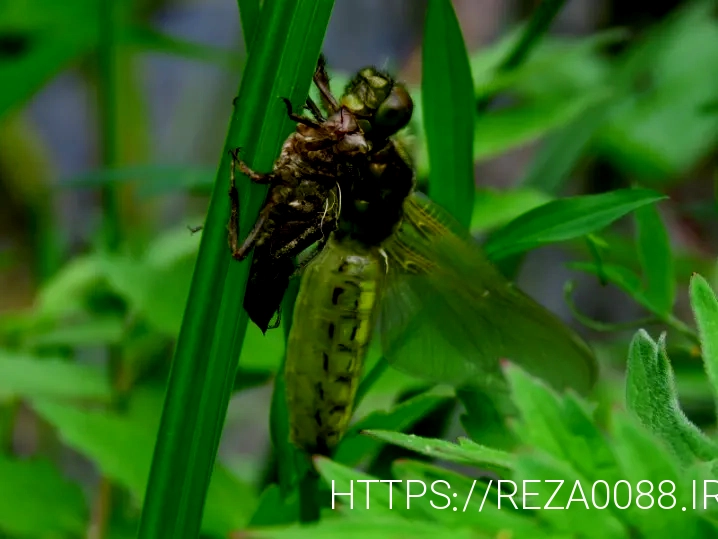Chimpanzees Facts, Diet, and Threats To the Species Survival
Understanding how the form of teeth relates to their function therefore requires a synthesis of knowledge over both tooth structure and the mechanical properties of the critical foods that resist being broken down1. I regretted that we did not have a camcorder with us on that historic day to document our observations of this new type of tool-assisted foraging behavior, but time and persistence would quickly resolve this issue. The pond where the chimpanzees used sticks to gather algae was about 4 m in diameter and approximately 50 cm deep. Tatyana and I retrieved the abandoned sticks and later recounted our observations to Gen Yamakoshi. The next day, we returned to the forest carrying a video camcorder and were lucky enough to repeat our algae-scooping observations at the same pond! This second episode occurred on August 29th, 1995 and was video recorded (see Supplementary video), thus serving as a sort of digital holotype for this novel chimpanzee behavior.
In addition to insects, chimps are known to consume small mammals like monkeys and squirrels. They are skilled hunters and can use their agility and intelligence to capture prey. We defined a feeding bout as a continuous feeding session on a particular food item that is not interrupted by any non-feeding activity. We stopped counting the behavior as a feeding bout on a particular food item until a food switch, or the individual engaged in another behavior. The feeding bout continued until the animal stopped chewing (up to 5 minutes).
The authors suggest that chimpanzee-sized hominins might have confronted and deprived leopard-size carnivores of their kills. In a recent paper on the exploitation of aquatic fauna by chimpanzees, Kathelijne Koops and colleagues (Koops et al. 2019) reported the first evidence of chimpanzees habitually catching and consuming aquatic crabs. Chimpanzees in the Nimba Mountains of Guinea consumed fresh-water crabs (Liberonautes lactidactylus and Liberonautes rubigimanus) year-round, irrespective of rainfall or ripe fruit availability.

This is mainly due to chimpanzees having a higher proportion of fast-twitch muscle fibres, which play a role in producing powerful and rapid movements. Humans, on the other hand, have more slow-twitch muscle fibres, which tend to favour endurance over strength. However, when you consider that not all of the infants will make it to a sanctuary—because they may have been trafficked as exotic pets or died in transit—it appears Future challenges in animal diets that the statistic may actually be a lot higher. Around one in five infants will make it to a sanctuary, meaning that in reality, for every infant that does make it, it’s possible that 25 adult chimpanzees or more were killed or taken. You’ll often find chimps up trees, either sleeping in nests of leaves or eating. Unfortunately, chimpanzees are classified by the IUCN Red List of Threatened Species as endangered.

Nuts, such as almonds and cashews, also make for a nutritious and energy-rich snack. In addition to their daily diets, the chimps are also provided with opportunities to forage through the vegetation for snacking, creating nests from the materials, or crafting tools. The chimps at Chimp Haven have been observed making use of native Louisiana plant species such sweetgum (Liquidambar styraciflua) and elm (Ulmus spp.).
As chimpanzees are so closely related to humans, they’re susceptible to picking up human diseases. Ebola has had and continues to have a devastating effect on chimpanzee populations, while HIV and other deadly respiratory diseases are also known to spread throughout the species. As chimpanzees and humans are so closely related, diseases are able to spread from humans to chimpanzees and vice versa.
Once the insects climb to the tool, the chimpanzee takes it out and eats it as its recently caught food. Interestingly, while I’ve described chimps and bonobos as largely vegetarian, most figs have animals inside them. If the fig is uneaten long enough, the new generation of wasps matures and fly away to find more figs.
Nuts, on the other hand, are a rich source of protein and healthy fats. They provide the chimps with the necessary building blocks for muscle growth, repair, and development. Chimpanzees have been observed using tools, such as rocks and sticks, to crack open hard nuts and extract the nutritious kernel inside. This behavior showcases their intelligence and problem-solving abilities.

Total nonstructural carbohydrates (TNC) were estimated by subtracting NDF, lipid, AP, and ash from 100%. Unlike other carnivores, chimpanzees don’t rely solely on hunting for their meat intake. They are opportunistic scavengers and have been observed stealing meat from kills made by other animals, such as leopards or crocodiles. This adaptation allows them to enjoy the benefits of meat without the inherent risks and energy expenditure of capturing it themselves.

It therefore appears that the anterior teeth of chimpanzees form the workhorse of the chimpanzee dentition, and are well adapted to deal with mechanical challenges arising from foods. These teeth are likely utilised to overcome the higher mechanical challenge presented by the external casings of savannah plants within the Issa environment. Such external barriers must be breached in order to gain access to internal nutrient tissues.
However, meat and other animal products can account for 6% of a chimpanzee’s diet. Interestingly, successful hunters typically share some portion of their kill with other group members in response to a variety of begging behaviours. Liberia Chimpanzee Rescue & Protection is the first and only chimpanzee sanctuary and conservation center in Liberia, rescuing chimpanzees who are victims of the illegal bushmeat and pet trades. Although the chimpanzee is one of the most well-studied animals on Earth, the amount of new information we are learning about these creatures every year shows we still have much to uncover. Researchers have observed what they call an “Eastern chimpanzee bias,” where the bulk of chimp research has come from the eastern subspecies. It should be noted that differences between chimpanzee behavior may not be due to subspecies differences, but rather cultural ones.
A chimpanzee will sometimes hug, pat or brush the face of another chimpanzee to try to reassure them or calm them down. They have a range of vocalisations including barks, hoots and grunts. It is believed that each individual has his or her own distinctive pant-hoot, so that they can be easily identified. Chimpanzees share over 98% of their genetic material with humans, and along with bonobos, are our closest living relatives. Humans and chimps are believed to share a common ancestor who lived 7 to 13 million years ago. The western chimpanzee’s closest relatives are the other three subspecies of the common chimpanzee, these are the eastern chimpanzee, central chimpanzee and Nigeria-Cameroon chimpanzee.
Chimpanzees are already experiencing the effects of climate change and will struggle to adapt to survive as it continues. One effect of climate change is the changing rainfall patterns that are altering lowland forest and savannah ecosystems in Central Africa. Severe droughts are resulting in the loss of vegetation, removing another already diminishing source of food for the ape species. It’s estimated that there are between 170,000 and 300,000 chimpanzees living in the wild. However, as an endangered species, this number is continually declining. In order to improve conservation efforts to protect this endangered species, it’s important that we educate ourselves more on the subject.
This 1-year difference might be related to the complexity of the tools. Thus, we discovered a difference in the age of the onset of tool behaviors, which may be related to the complexity of the tool types. The number in parentheses represents the number of days when that food item was consumed by female chimpanzees during the study period. Whenever possible, foods were separated into broad plant anatomical categories, such as exocarp and mesocarp for fruits, with leaves divided into laminar tissue vs. midrib/veins, concordant with Vogel et al.18,62. To deal with anisotropy, tests were performed in the direction relevant to feeding.
Not only does this lead to the destruction of habitats to build mines, it also leads to the construction of towns to support the mines and the rise of prospective gold miners, which in turn leads to further deforestation as well as poaching. Chimpanzees do not have a mating season, but females generally go into estrus when food is most available. It is obvious when a female chimp goes into estrus as her anogenital region swells up. Although the dominant male will often try to restrict mating, females mate with several males in their group.
This not only fosters social bonding but also increases their chances of success in hunting and gathering food. In field management, logistics and support by C.B., H.J.K., K.E.L., A.K.P., and F.A.S. Food mechanical data were collected and analysed by A.v.C. Isotopic samples were collected by S.A., A.K.K., and M.K. Manuscript prepared by A.v.C., K.K., and V.O., drafting and editing conducted by C.B., H.J.K., A.K.K., K.E.L., A.K.P., F.A.S., V.O., K.K., and A.v.C. A chimp may hug, pat, or brush the face of another chimp in an effort to reassure them or calm them down.

They display remarkable intelligence and resourcefulness when hunting for insects, using tools like sticks or stones to extract termites and ants from their nests. They also occasionally feed on small mammals, such as monkeys, if the opportunity presents itself. One of the primary sources of nutrition for chimpanzees comes from fruits and nuts. Just like us, they have a sweet tooth and enjoy the juicy goodness of ripe fruits. From bananas and berries to figs and mangoes, chimps have a preference for a wide range of fruits.
For instance they may adjust their densities, group size, spacing patterns and ranging patterns (Chapman, Chapman, Bjorndal, & Onderdonk, 2002; Ganzhorn, 1992, 2002; Hemingway & Bynum, 2005). Primates may also switch to low-quality foods when high-quality foods are scarce (Marshall & Wrangham, 2007; Vogel, Haag, Mitra-Setia, van Schaik, & Dominy, 2009; Watts, Potts, Lwanga, & Mitani, 2012). Chimps mostly feed on the fig tree fruits as their major loved fruits, however they can also feed on other tree fruits. Fruit is the main component of the chimpanzee diet, and they spend at least four hours a day finding and eating varieties of this food. In the afternoon, chimps usually spend about an hour or two feeding on young leaves. In addition to leaves, vegetation such as flowers and buds are also consumed by chimpanzees.
The IUCN identifies the emergence of the palm oil industry in West Africa as a rising threat to the Western chimpanzee. The palm oil industry requires mass deforestation to grow plantations of palm trees and has had devastating effects on wildlife in southeast Asia. The IUCN states that 94% of chimpanzee habitat in Liberia and 84% of chimpanzee habitat in Sierra Leone are vulnerable to destruction for oil-palm plantations.
However, it’s important to note that meat comprises only a small percentage of a chimp’s overall diet. The shells are so tough that the only way to crack them is to whack the nuts with a hard stone. Aside from being nutritious and delicious, figs account for almost half of a chimpanzee’s diet, providing an excellent source of energy. Some foods cannot be indented because their shape and size does not allow for this, e.g., specimens in the form of rods. In these cases, we resorted to more traditional compression tests where possible.
At Chimp Haven, the chimps are provided with a fresh, healthy diet consisting of primate biscuits, fruits, vegetables, and food enrichment, all prepared fresh and delivered to the chimps daily by their dedicated care givers. The elements left in in ancient teeth and bones can reveal crude measures of the diets of our ancestors or their kin. We can also look to the diets of our living relatives for more detailed insight. Yet, the common ancestor from which both modern apes and modern humans descend was probably less like us and more like them.
Tatyana Humle was also there and at that time was an undergraduate student of Edinburgh University. She was working as a summer intern at Bossou and was the first foreign student whom I accepted to join us in the field. I would subsequently adopt several foreign students in the following years, including Dora Biro, Claudia Sousa, Laura Martinez, Kimberly Hockings, Kathelijne Koops, Susana Carvalho, and others.




